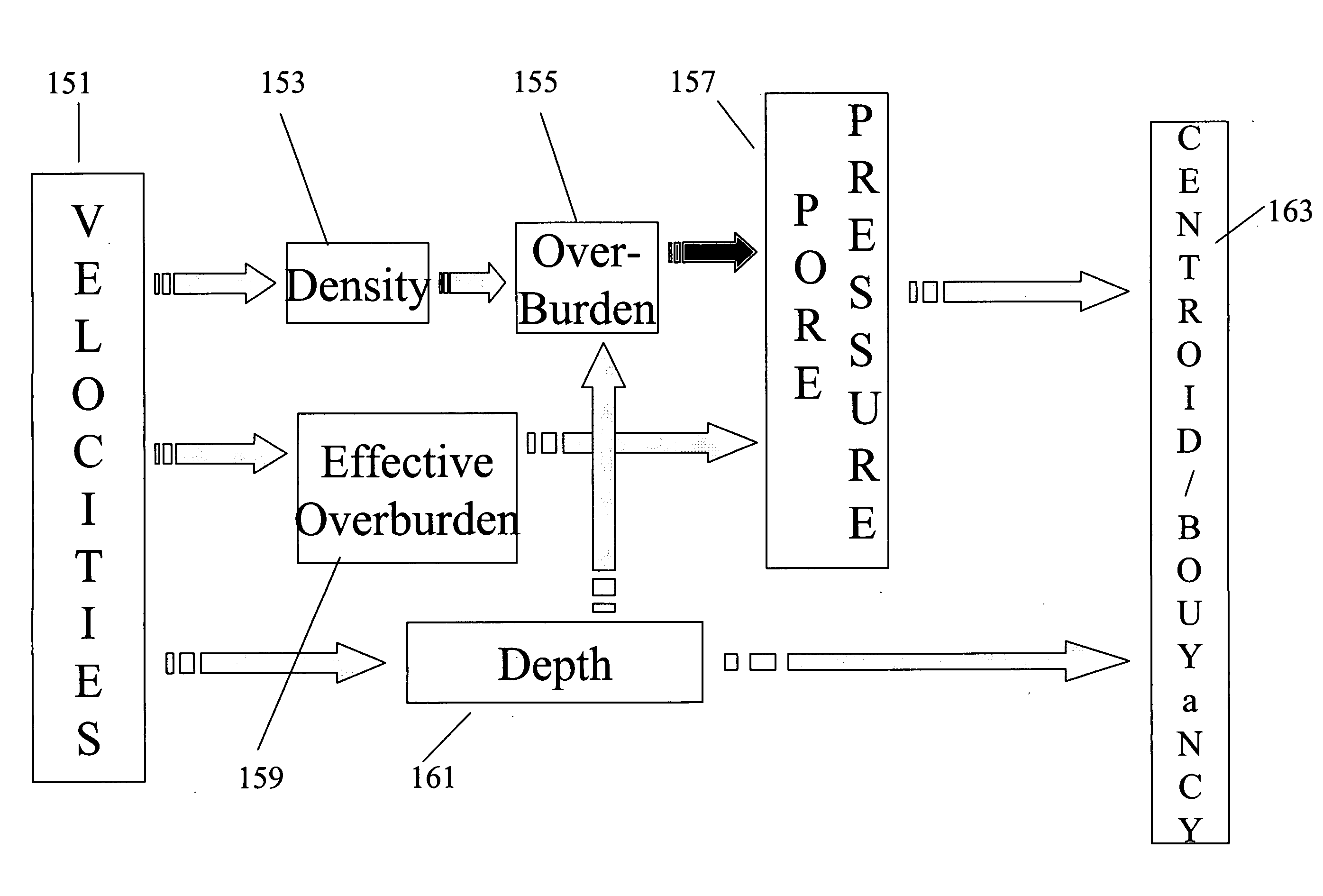Quantitative risk assessment applied to pore pressure prediction
a risk assessment and pore pressure technology, applied in the field of geophysical exploration, can solve the problems of no method discussed above addresses the problem of errors caused, the risk of a catastrophic blowout, and the risk of formation damage, so as to reduce the uncertainty of pore pressure estimation, and avoid well cave-in and formation damage
- Summary
- Abstract
- Description
- Claims
- Application Information
AI Technical Summary
Benefits of technology
Problems solved by technology
Method used
Image
Examples
Embodiment Construction
[0032] Referring now to FIG. 1, an example of portions of a marine seismic data acquisition system is illustrated. A vessel 10 on a body of water 15 overlying the earth 16 has deployed behind it a seismic source array 20 and a streamer cable 25. The seismic source array 20 is typically made up of individual air guns 20a, 20b, . . . 20n that are fired under the control a controller (not shown) aboard the vessel 10. Seismic pulses propagate into the earth and are reflected by a reflector 22 therein. For simplifying the illustration, only one reflector is shown: in reality, there would be numerous reflectors, each giving rise to a reflected pulse. After reflection, these pulses travel back to the surface where they are recorded by detectors (hydrophones) 30a, 30b, . . . 30n in the streamer cable. The depth of the source array and the streamer cable are controlled by auxiliary devices (not shown).
[0033] In the seismic data acquisition system of FIG. 1, the sources and receivers are in ...
PUM
 Login to View More
Login to View More Abstract
Description
Claims
Application Information
 Login to View More
Login to View More - R&D
- Intellectual Property
- Life Sciences
- Materials
- Tech Scout
- Unparalleled Data Quality
- Higher Quality Content
- 60% Fewer Hallucinations
Browse by: Latest US Patents, China's latest patents, Technical Efficacy Thesaurus, Application Domain, Technology Topic, Popular Technical Reports.
© 2025 PatSnap. All rights reserved.Legal|Privacy policy|Modern Slavery Act Transparency Statement|Sitemap|About US| Contact US: help@patsnap.com



